Chapter 17.64
COMPREHENSIVE SIGN ORDINANCE1
Sections:
17.64.030 Sign permit requirements.
17.64.050 Signs permitted by conditional use permit only.
17.64.055 Permitted temporary and special event banners.
17.64.060 Signs or actions exempt from permit requirements.
17.64.070 Removal of temporary signs not subject to a sign permit.
17.64.080 Signs permitted upon the issuance of a sign permit.
17.64.100 Historic or culturally significant signs.
17.64.110 Comprehensive sign plans.
17.64.120 Temporary special event signs.
17.64.130 Design review standards.
17.64.140 Application, review and appeal procedures.
17.64.150 Nonconforming signs.
17.64.160 Abatement requirements.
17.64.170 Maintenance of permitted signs.
17.64.190 Removal of illegal signs.
17.64.010 Purpose and intent.
A. It is the intent of these provisions to establish a comprehensive system for the regulation of all signs within the city.
The city recognizes the need of signs to identify businesses and property within the community. The city also recognizes that signing is an important design element of the physical environment which serves to express both the owner of a sign and the community. Regulations consistent with community goals and objectives are necessary to ensure both individual expression and an attractive community character.
It is the purpose of these regulations to enhance the aesthetic nature of the community by eliminating visual clutter, while permitting effective communication by owners and occupants of property. In so doing, it is anticipated that these regulations will contribute to the economic stability of the city and its overall attractiveness to residents, visitors and businesses.
B. Specifically, the purposes of these regulations are to:
1. Protect the general public health, safety and welfare of the community;
2. Reduce possible traffic and safety hazards through reduced sign clutter, and elimination of unauthorized signs in the public right-of-way;
3. Maximize public convenience through appropriate identification and directional signs;
4. Minimize the visual and lighting impacts of business signs to adjacent residential neighborhoods;
5. Encourage signs and graphics which are well designed, aesthetically pleasing and appropriate to their intended context;
6. Ensure that permitted signs contribute to a high quality visual environment constituent with community values;
7. Protect and enhance the visual quality of designated scenic highways and other areas located within the scenic area overlay zone; and
8. Enhance the economic value of the community. (Ord. 140 § 1, 1991)
17.64.020 Definitions.
Definitions of terms contained in this chapter are set forth in this section. Whenever a term defined in this section is used in this chapter it shall have the defined meaning set forth unless, from the context in which the term is used, it is apparent that a different meaning is intended. Undefined terms shall have their common meaning. It is intended that the definitions contained in this section shall apply to this chapter only.
“Advertise” means any notice to the public for the purpose of increasing sales or business, announcing the availability of a service or product, or making claims as to the value or quality of any service or product.
“Advertising structure” means an on-site or off-site structure of any kind or character other than the main business identification sign, erected or maintained for outdoor advertising purposes, upon which any poster, bill, printing, painting, or other advertisement of any kind whatsoever is placed.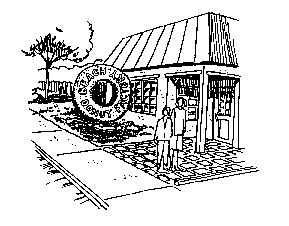
“Animated sign” means any sign that uses movement or changes of lighting (including reflected lighting) to convey the illusion of motion.
“Area of Signs.” The area of sign shall include the entire area within any type of perimeter or border which may enclose the outer limits of any writing, representation, emblem, figure or character, together with any other material or color forming an integral part of the display or used to differentiate such sign from a building on which it is placed.
The area of a sign having no such perimeter shall be computed by enclosing the entire area within parallelograms, triangles or circles in a size sufficient to cover the entire area of the sign copy and computing the size of such area. In the case of a two-sided sign the area shall be computed as including only the maximum single display surface which is visible from any ground position at one time. The supports or uprights on which any sign is supported should not be included in determining the sign area unless such supports or uprights are designed in such a manner as to form an integral background of the sign. In the case of any spherical, conical or cylindrical sign one-half of the total surface area shall be computed as the area of the sign.
“Awning” means a roof-like protective cover constructed of metal, wood or other rigid material extending from all or a portion of a building such as a door, entrance, window or outdoor service area. For the purposes of this chapter a sign on an awning shall be considered to be a wall sign.
“Balloon” means a nonporous small bag of tough light material filled with a gas often lighter than air so as to rise and/or float in the atmosphere. Large inflatable advertising or attention-getting devices or structures such as large inflatable bottles, cans, animal or human shapes, ice cream cones or other things are not considered to be balloons and are prohibited.
“Banner, flag or pennant” means any cloth bunting, plastic, paper, fabric or similar material used for advertising purposes attached to or pinned on or from any structure, staff, pole, line, framing or vehicle, not including governmental flags as described in SBMC 17.64.060.
“Building frontage” means the lineal footage of all building elevations containing a public entrance and which face a public street or on-premises parking lot, excluding driveways and aisles.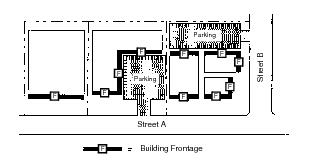
“Bulletin board” means a type of changeable or removable copy sign which is nonelectric and is oriented toward pedestrian viewing.
“Business frontage” means that portion of an individual tenant or occupant space which adjoins the business frontage.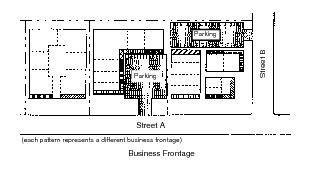
“Canopy” means a removable roof-like, protective cover constructed of a durable fabric or other flexible material extending from all or a portion of a building such as a door, entrance, window, or outdoor service area. For the purposes of this title, a sign located on a canopy shall be considered to be a wall sign.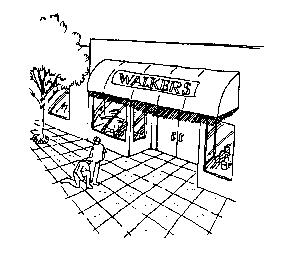
“Can sign” means an internally illuminated sign, typically constructed of a fabricated metal cabinet and plastic facing, in which the background and copy of the sign form an integrated unit.
“Changeable copy sign” means a sign or portion thereof with characters, letters, or illustrations that can be changed or rearranged without altering the face or the surface of the sign. (See also “Bulletin board” and “Marquee sign”.)
“Commercial, office, or industrial center” means a commercial retail, office, industrial or mixed use development, of four or more tenants or occupants, in which businesses and structures are designed as an architecturally integrated and interrelated development. Such design is independent of the number of structures, lots, or parcels making up the center.
“Community identification sign” means any sign authorized by the city council to be placed in the public right-of-way or on city property to identify the city of Solana Beach or specific areas within the city of Solana Beach.
“Comprehensive sign plan” means a unified sign program developed to integrate signs with building and landscaping design to achieve architectural unity.
“Copy” means any words, letters, numbers, figures, designs or other symbolic representations incorporated into a sign.
“Directional sign” means an on-premises sign which is intended to convey information regarding the location of specific features of the site or to convey on-premises regulations including traffic and circulation regulations. Such signs typically include words such as “entrance”, “enter”, “exit”, “in”, “out”, “no trespassing”, “restrooms”, “parking”, “no parking” or directional information exclusive of advertising.
“Director of community development” means the director of community development for the city of Solana Beach.
“Exterior-oriented sign” means a sign which is primarily intended to be seen from a public street or right-of-way.
“Flashing sign” means a sign which contains or is illuminated by lights which are intermittently on and off, or which change in intensity or color.
“Freestanding sign” means a sign which is supported by structures or supports that are placed on, or anchored in, the ground and that are independent from any building or other structure. (See also “Monument sign”.)
“Height of a sign” means the greatest vertical distance measured from the finished grade of the sidewalk when located within the required setback area or the greatest vertical distance measured from the grade at which the sign supports intersect the ground when located beyond the required setback area including any accompanying architectural features of the sign.
“Inoperative activity” means a business or activity that has ceased operation, except for temporary closures for repairs, alterations or other similar situations at any given location for a period of at least 180 days.
“Interior-oriented sign” means a sign inside of any business that is not intended to be read or visible from outside the building in which the business is located. Interior-oriented signs may also include signs which are primarily intended to be seen by pedestrians within an interior courtyard, plaza, or open space, when not intended to be visible from adjacent public streets or rights-of-way.
“Legal” means authorized or permitted in accordance with defined procedures by ordinance or law.
“Logo” means a trademark or symbol used to identify a business.
“Mansard Sign.” See “Roof sign” and “Wall sign.”
“Marquee” means a permanent roof-like structure projecting beyond the main building entrance or extending along and projecting beyond the wall of the building. A marquee is characteristically used to mark the entrance to a theater or cinema.
“Marquee sign” means any sign attached to, or in any manner or made part of, a marquee.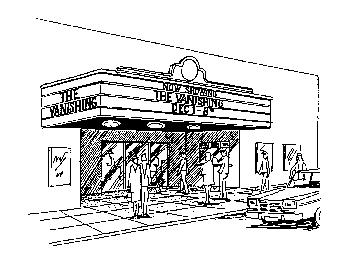
“Monument sign” means a low profile freestanding sign, with its base resting on the ground and typically incorporating the design and building materials complementary to the architectural theme of the buildings on the same property.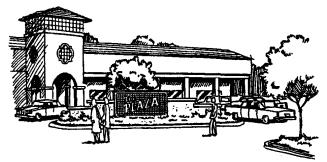
“Mural.” See “Sign.”
“Neighborhood identification sign” means a permanent sign designed to identify the name of a residential subdivision.
“Nonconforming sign” means a sign that does not comply with the provisions of this chapter.
“Off-premises sign” means a sign which advertises or directs attention to products or activities that are not provided on the parcel upon which the sign is located.
“Parapet” means that part of the wall which extends above the roof. For the purposes of this chapter the top of the parapet shall be considered to be the roofline.
“Pole sign” means a type of freestanding sign which is permanently supported by one or more poles or uprights.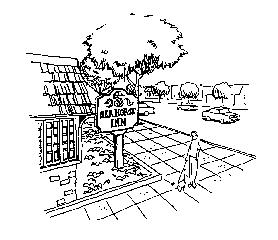
“Portable sign” means any sign not permanently attached, or designed to be permanently attached to the ground or other permanent structure, or a sign designed to be transported by means of wheels; signs converted to A-frames or T-frames; and menu and sandwich board signs. (See also “Temporary Sign.”)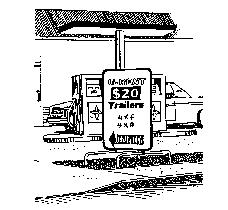
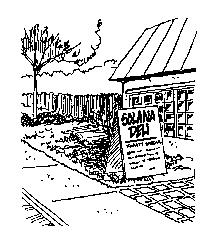
“Projecting sign” means any sign attached to and projecting from the wall of a building and not in the same plane as the wall. 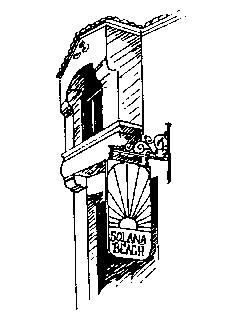
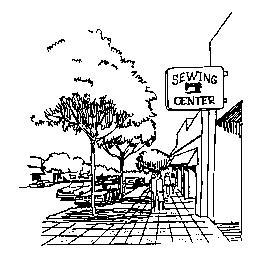
“Public right-of-way” means a strip of land acquired by reservation, dedication, forced dedication, prescription or condemnation and intended to be occupied by a road, crosswalk, railroad, electric transmission lines, oil or gas pipeline, water line, sanitary storm sewer and other public uses.
“Residential identification sign” means any permanent sign which is designed to identify the name of a multiple tenant residential building or complex.
“Revolving sign” means a sign which all, or a portion of, may rotate either on an intermittent or constant basis.
“Roof” means the external covering of a building or structure above or covering any exterior or interior vertical wall height.
“Roof sign” means any sign erected, constructed or placed upon or over a roof, or placed so as to extend over or above the roofline, which is wholly or partly supported by such buildings. Roof signs shall not include signs located on a mansard roof if the sign is mounted vertically and architecturally integrated with the roof. For the purposes of this chapter architecturally integrated mansard signs and other architecturally integrated signs located below the principal roof line shall be classified as wall signs.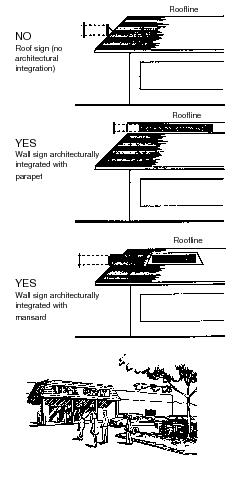
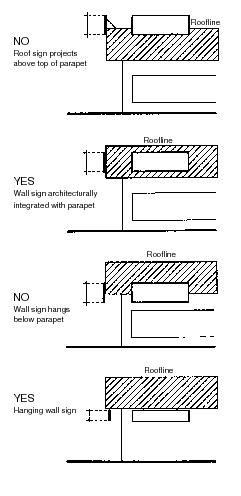
“Roofline” means the top edge of the roof or top of the parapet, whichever forms the top line of the building silhouette.
“Sign” means any device, fixture, placard or structure that uses any color, form, graphic, illumination, symbol or writing to advertise, to announce the purpose of a person or entity, or to communicate information of any kind to the public. Murals or other works of art painted on building surfaces which are not intended to advertise, announce the purpose of a person or entity, or to communicate information shall not be classified as a sign.
“Special event sign” means a temporary sign which advertises special civic events and activities such as street fairs, community festivals, parades, farmers’ markets and charity benefits. 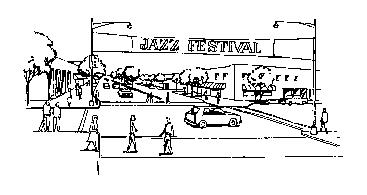
“Street frontage” means the lineal distance for which a lot or premises adjoins a public street. Where a lot or premises adjoins more than one street, frontage calculations shall be based on each street separately.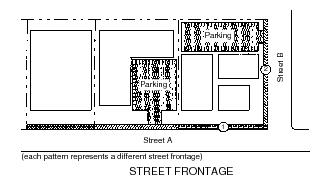
“Temporary” means erected for a temporary purpose for a limited time period not to exceed 30 days. Any sign in place for a period exceeding 30 days shall be considered permanent and all provisions of this chapter relating to permanent signage shall apply. (Exemption: Temporary real estate or construction site signs shall be allowed to remain for a time period necessary to complete the sale, rental or development of the property.)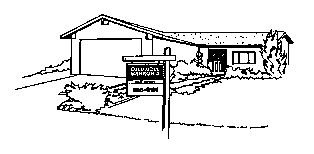
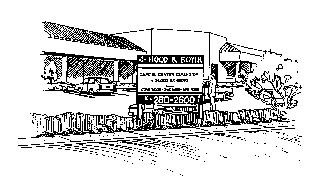
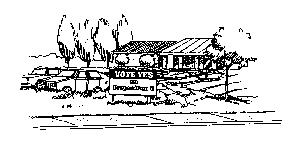
“Useful life” means the period of time in which a sign and all its components, materials and support structures are maintained and kept in proper repair as specified in SBMC 17.64.170.
“Vehicle sign” means a sign which is attached to or painted on a vehicle.
“Wall sign” means a sign painted on, attached to, or erected against the wall of a building, structure, canopy or awning with the exposed face of the sign parallel to the plane of such wall or structure. For the purposes of this chapter, an architecturally integrated mansard sign shall be classified as a wall sign. (See “Roof sign.”)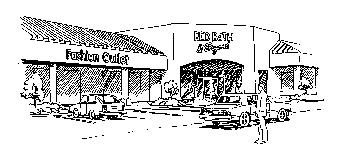
“Window sign” means a sign painted, attached, glued or otherwise affixed to a window for the purpose of being visible from the exterior of the building. For the purposes of this chapter a permanent window sign shall be classified as a wall sign. 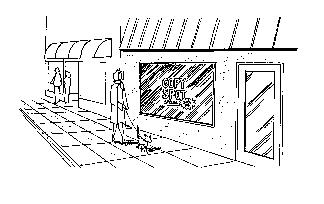
(Ord. 173 § 1, 1993; Ord. 140 § 1, 1991)
17.64.030 Sign permit requirements.
A. A sign permit is required before the placing, erecting or installing, of any sign or sign structure unless such sign, sign structure or action is expressly exempted by this chapter. A sign permit is also required before installation of any sign approved pursuant to a comprehensive sign plan. The purpose of the sign permit is to ensure that the proposed sign complies with this chapter, all other applicable ordinances of the city, and any approved comprehensive sign plans. Sign permits and comprehensive sign plans may be processed concurrently. Building permits may be required for some types of sign structures.
B. It is unlawful for any person to place, erect, or install a sign or sign structure without first having obtained a sign permit for the sign or sign structure unless the sign or sign structure is exempted from the permit requirements by this chapter.
C. It is unlawful for any person to knowingly cause or allow a sign to be placed, erected or installed on property owned or lawfully occupied by the person without a sign permit having first been issued unless the sign or structure is exempted from the permit requirements by this chapter. (Ord. 140 § 1, 1991)
17.64.040 Prohibited signs.
In all zones, outdoor exterior-oriented signs not expressly permitted by this chapter are prohibited. The following types of signs, without limitation, are prohibited:
A. Roof signs;
B. Pole signs exceeding eight feet in height, except flag poles;
C. Flashing signs, animated signs, rotating or revolving signs, and all other changeable copy signs, except where a conditional use permit has been obtained pursuant to SBMC 17.64.050. Bulletin boards and theater marquee wall signs are permitted by SBMC 17.64.060 and 17.64.080;
D. Noise making signs;
E. Signs mounted or painted on vehicles when the vehicle is parked or stored on property or adjacent rights-of-way in such a manner as to identify a business or advertise a product;
F. Portable signs, except temporary signs permitted by SBMC 17.64.060;
G. Off-premises signs in residential zones or in the scenic area overlay zone, except temporary real estate signs for the sale, lease or exchange of property pursuant to SBMC 17.64.060;
H. Signs placed or maintained within, upon or over any post, pole, tree, shrub, stone, utility pole, traffic control device, hydrant or other similar object, in any street, alley or sidewalk, or on any public property in the city except: (1) directional, warning, traffic control, informational, community identification or temporary special event signs or structures required by law placed, erected or installed by on behalf of federal, state, county or city agencies, and (2) projecting signs which comply with SBMC 17.64.080. For the purposes of this chapter, “public property” shall include, without limitation, property owned by the city or any governmental agency, any public right-of-way or easement, and any property subject to a public open space easement;
I. Except when specifically authorized by a permit issued under SBMC 17.64.120 for a special event, stringed flags, pennants, streamers, whirligigs, large inflatable advertising or attention-getting devices or structures, or similar attention-attracting devices are prohibited. Balloons, displayed pursuant to SBMC 17.64.060(R), and a single small flag or pennant are exempt from this prohibition. Temporary and special event banners may be permitted only pursuant to SBMC 17.64.055. Permanently mounted banners without copy may be approved as part of a comprehensive sign plan pursuant to SBMC 17.64.110. Permanently mounted banners with copy are considered signs and may be permitted upon the issuance of a sign permit;
J. Inflatable signs and advertising structures including tethered hot air balloons (except for temporary special events pursuant to SBMC 17.64.120);
K. Any type of advertising structure, including without limitation statues, other than a permitted sign which does any of the following: conveys a specific commercial or noncommercial message; or advertises a product, service or business; contains or represents a business trademark or logo;
L. Signs which imitate or resemble official traffic warning or control devices or signs, that by color, location or lighting may confuse or disorient vehicular or pedestrian traffic (except traffic or directional signs installed on private property to control on-site traffic and not visible to or directed at traffic on a public street);
M. Signs which violate building, health, safety or fire regulations set forth in SBMC Title 15. (Ord. 173 § 2, 1993; Ord. 166 § 1, 1992; Ord. 140 § 1, 1991)
17.64.050 Signs permitted by conditional use permit only.
A. The following types of signs shall require a conditional use permit, in addition to a sign permit:
1. Flashing signs, including time and temperature signs and other changeable copy signs, either electric or nonelectric, except bulletin boards, theater marquee wall signs permitted by SBMC 17.64.080 and theater monument signs permitted by SBMC 17.64.080;
2. Animated signs, including signs which convey the illusion of motion;
3. Rotating or revolving signs;
4. Off-premises signs in any zone other than a residential zone.
B. Off-premises signs shall not be permitted in the scenic area overlay zone, SBMC 17.48.010. (Ord. 173 § 3, 1993; Ord. 140 § 1, 1991)
17.64.055 Permitted temporary and special event banners.
Temporary and special event banners shall be allowed only as follows:
A. Banners may not exceed one square foot for each linear foot of building frontage, and not exceed 32 square feet in area.
B. Such banners shall be displayed for a consecutive period not to exceed 14 days, for a maximum period of 30 days per year, with the exception of grand opening banners which may be displayed for a period not to exceed 60 days. Grand opening banners may begin display not later than two months past the start of the business operations, nor more than two months before the anticipated opening. Only one grand opening banner shall be permitted for the life of the business. A subsequent grand opening banner may be permitted when business ownership has transferred to another owner.
C. Such banners shall be wind and water resistant and be securely fastened.
D. Such banners shall be consistent with the standards of this chapter as to location, height and type.
E. Applicants for such banners must apply for, and have approved, a sign permit. (Ord. 173 § 4, 1993)
17.64.060 Signs or actions exempt from permit requirements.
Unless otherwise specifically prohibited or regulated by the provisions of this chapter regulating signs within various zones, or by the terms of a comprehensive sign plan, the signs or actions listed below are allowed and are exempt from the requirements for sign permits. An electrical, building or similar construction permit may be required under SBMC Title 15. Signs which are not installed or maintained, or actions which are not done in full compliance with the terms or conditions of this section, are prohibited.
A. Temporary on-premises window signs painted on a window or affixed to the interior of a window; provided, that such sign does not occupy more than 25 percent of the total area of the window in which it is displayed;
B. One temporary unlighted real estate sign per lot not exceeding six square feet in area nor five feet in height and conveying information relating to the sale, lease or exchange of real property as specified in this subsection. Such sign may be an on-premises sign, or an off-premises sign containing information pertaining to other real property. The information which may be contained in the sign is limited to the following terms:
1. That certain real property is being offered for sale, lease or exchange,
2. The location of the property and directions to the property,
3. The name of the owner of the offered property; the name of the agent of the owner of the offered property; the name of the company with which the agent is associated,
4. The address and telephone number of the owner, the owner’s agent and the agent’s company,
5. The words “open house” or similar information,
6. Information relating to the price or terms of the sale, lease or exchange.
An on-premises sign for the purpose of advertising for sale, lease or exchange of an undeveloped residentially zoned lot may be increased to eight square feet in area.
In addition to a sign containing the information specified in subsections (B)(1) through (B)(6) of this section, an on-premises sign not exceeding three square feet in area and containing the words “open house” or similar information may be placed on a lot during the time when the property is being held open for inspection by prospective buyers or renters. The additional sign may be separately placed or may be attached to another permitted sign. The owner of the advertised property and owner’s agent are responsible for compliance with this subsection;
C. One temporary unlighted on-premises sign per residentially zoned lot not exceeding six square feet in area and, if freestanding, five feet in height, containing a noncommercial message or identifying the owner or occupant of the premises (except home occupations);
D. One temporary unlighted on-premises sign advertising the sale, lease or development of the property (including the identity of contractors), or containing noncommercial messages per street frontage on commercial, industrial or public institutional zoned lots. Such signs shall not exceed 20 square feet in area nor eight feet in height except that such signs that advertise the sale, lease or development of the property may be increased to 32 square feet in area for vacant lots, properties under construction, and developed properties with tenant vacancies exceeding 50 percent of usable floor area. Additional temporary signage may be permitted on the fencing surrounding an active construction site; provided a comprehensive sign plan for the fence is obtained pursuant to SBMC 17.64.110;
E. Signs within a structure or building or other enclosed area of property when such signs are not intended to be viewed from outside the structure or property;
F. Street numbers, consistent with the requirements of the city fire department;
G. Bulletin boards on property occupied by governmental, civic or religious organizations; provided such signs do not exceed 16 square feet in area;
H. Official and legal notices;
I. Up to four governmental flags of any nation, state, county or municipal corporation. Each flag in excess of four shall require a sign permit;
J. Temporary displays relating to a national, state or local holiday;
K. On-premises directional signs not exceeding four square feet in area;
L. Directional, warning, traffic control, informational or temporary special event signs required or authorized by law erected, installed, or placed by or on behalf of any federal, state, county or city government. Public utility signs showing locations of underground facilities or public telephones, and safety signs on construction sites are included within this exemption;
M. Signs on public transportation vehicles regulated or operated by a political subdivision or transportation district, including but not limited to buses and taxicabs;
N. Signs on licensed commercial vehicles; provided such vehicles are not used or intended for use as portable signs or advertising structures. Vehicle signs subject to SBMC 17.64.040 are prohibited;
O. Copy applied to fuel pumps or dispensers such as fuel identification, service station logo, and other signs required by law;
P. Changing the copy of a sign and/or performing maintenance which does not involve structural changes; provided the color, size, design and other physical characteristics of such copy are consistent with an existing approved sign permit or sign plan;
Q. Election Campaign Signs. In addition to other authorized temporary signs conveying noncommercial messages, campaign signs relating to federal, state, county, city, school district, special district or other governmental agency elections are permitted on private property. Each campaign sign shall not exceed five square feet in area and, if freestanding, 42 inches in height. Signs attached to and not exceeding the top of fences or buildings may exceed the 42-inch height limit. Each campaign sign shall be removed within 10 days of the election to which it relates;
R. Balloons. Balloons made of a nonmylar/nonreflective type material not exceeding 12 inches in diameter, and firmly attached to private property so as to eliminate their release into the atmosphere. Balloons shall be securely fastened such that they do not extend into the public right-of-way, and shall be securely tethered by a material no more than 12 feet in length. (Ord. 173 § 5, 1993: Ord. 140 § 1, 1991)
17.64.070 Removal of temporary signs not subject to a sign permit.
All temporary or special event banners or signs permitted pursuant to SBMC 17.64.055 or 17.64.120 shall be removed within 48 hours after the expiration, termination, completion, cessation or elimination of the temporary purpose or special event for which the banner or sign was permitted. Temporary signs authorized by 17.64.060(A) or (J) shall be removed within 48 hours of the expiration, termination, completion, cessation or elimination of the temporary purpose for which such sign was intended. (Ord. 173 § 6, 1993: Ord. 140 § 1, 1991)
17.64.080 Signs permitted upon the issuance of a sign permit.
The following on-premises signs are permitted in the indicated zones subject to a sign permit:
A. Commercial Zones (C, LC, SC).
1. Freestanding Signs. One freestanding sign per street frontage; provided, that one additional freestanding monument sign is permitted for each street frontage which exceeds 250 linear feet. The maximum area per freestanding sign shall be 32 square feet. One freestanding sign per frontage may be increased to a maximum of 66 square feet where the sign serves multiple tenants of a community shopping or office center. A 25 percent increase in sign area is allowed if only one freestanding sign is used where more than one freestanding sign is permitted. The maximum height of a freestanding sign shall be eight feet from the finished grade.
2. Wall Signs. Wall signs, not to exceed a total signage allowance of one square foot per linear foot of building frontage minus any area devoted to projecting signs. Projecting signs of five square feet in area or less shall not be included in signage calculations for businesses with 20 feet or less of building frontage and/or less than 1,500 square feet of tenant space located in pedestrian-oriented areas such as the Highway 101 specific plan plaza pedestrian district, the Cedros design district and commercial centers with 10 or more tenants. Permanent window signs, canopy signs or awning signs shall be classified as wall signs. Wall signs may be located or distributed in any manner consistent with the design standards set forth in SBMC 17.64.130; provided, that such signs do not project above the top of a wall or parapet.
3. Projecting Signs. One projecting sign per tenant, per business frontage; provided such signs are spaced at least 20 feet apart. Projecting signs shall not exceed 10 square feet in area nor extend more than five feet from the building. Projecting signs shall provide a minimum sidewalk clearance of eight feet.
4. Comprehensive Sign Plan. A comprehensive sign plan is required for all commercial centers consisting of four or more tenant or occupant spaces on a lot or on two or more lots subject to a common development permit or plan. Only signs which substantially conform to the comprehensive sign plan may be permitted.
5. Business Center Entrance Monument Signs. In addition to the signs permitted by the provisions of subsection (A)(1) of this section, commercial developments at least one-half acre in size with four or more separate businesses are allowed one property entrance monument sign for identification of the development. The sign shall not exceed a height of eight feet from the finished grade, nor be greater than 66 square feet per sign face. The sign shall be located at an entrance to the property and may be located within the setback. The signs shall be designated and placed in a manner which does not create a dangerous condition of public property. Items of information shall be limited to the name of the development or center, numeric address, and name of the city.
B. Industrial and Office Professional Zones (LI, OP).
1. Freestanding Signs. One freestanding sign per street frontage. The maximum area per sign shall be 32 square feet. A freestanding sign may be increased to a maximum of 66 square feet where the sign serves multiple tenants of a business center. A 25 percent increase in sign area is allowed if only one freestanding sign is used where more than one freestanding sign is permitted. The maximum height of a freestanding sign shall be eight feet from the finished grade.
2. Wall Signs. Wall signs, not to exceed a total signage allowance of one square foot per linear foot of building frontage. Permanent window signs, canopy signs, or awning signs shall be classified as wall signs. Wall signs may be located or distributed in any manner consistent with the design standards set forth in SBMC 17.64.130; provided, that such signs do not project above the top of a wall or parapet.
3. Comprehensive Sign Plan. A comprehensive sign plan is required for all office and industrial centers consisting of four or more tenant or occupant spaces on a lot or on two or more lots subject to a common development permit or plan. Only signs which substantially conform to the comprehensive sign plan may be permitted.
4. Business Center Entrance Monument Signs. In addition to the signs permitted by the provisions of subsection (A)(1) of this section, commercial developments at least one-half acre in size with four or more separate businesses are allowed one property entrance monument sign for identification of the development. The sign shall not exceed a height of eight feet from the finished grade, nor be greater than 66 square feet per sign face. The sign shall be located at an entrance to the property and may be located within the setback. The signs shall be designated and placed in a manner which does not create a dangerous condition of public property. Items of information shall be limited to the name of the development or center, numeric address, and name of the city.
C. Residential and Agricultural Zones (ER, LR, LMR, MR, MHR, HR, A).
1. Subdivision Entrance Signs. For residential subdivisions consisting of more than four residential units, two permanent neighborhood identification signs per development entrance. Each sign shall not exceed 32 square feet in area or five feet in height from the finished grade. Subdivisions having a sign or signs under this subdivision shall not be permitted to have signs under subdivision 2 of this subsection.
2. Residential Building Identification Signs. For properties used for multifamily residential buildings, one permanent residential identification sign per street frontage. Each sign shall not exceed 16 square feet in area for multiple dwelling residential buildings of four or fewer units, and 32 square feet in area for residential buildings of five or more units. No freestanding residential identification sign shall exceed a height of five feet from the finished grade. Property having a sign under this subdivision shall not be permitted to have signs under subdivision 1 of this subsection.
3. Agricultural Business Signs. For property principally used for agricultural or horticultural business, one unlighted, freestanding sign or wall sign per street frontage not to exceed 16 square feet in area or, for freestanding signs, five feet in height from the finished grade.
D. Special Uses (All Zones).
1. Gasoline Sales. In addition to the signs otherwise allowed in the commercial zones, any premises used for the sale of gasoline or diesel fuel shall be allowed one freestanding price sign per street frontage not to exceed two such signs per establishment. The signs shall not exceed 16 square feet in area. If there is a freestanding monument sign on the premises, one of the permitted price signs shall be integrated into the freestanding monument sign. If there is more than one monument sign, the monument signs and price signs shall be integrated. If the provisions this subdivision conflict with applicable state laws pertaining to establishing regulations or requirements for signs advertising gasoline or other automobile fuel, then the provisions of this subdivision shall be subordinate to the state law, but only to the extent of the conflict.
2. Theaters. In addition to the signs otherwise allowed in the commercial zones, theaters shall be allowed one marquee wall sign not to exceed 250 square feet in area. Marquee signs may feature changeable copy, either electric or nonelectric; provided such copy does not incorporate flashing or animated features.
3. Civic Uses. For any civic use, (i.e., schools, churches, libraries, museums and other buildings or property occupied all or in part by a government agency) one freestanding monument or wall identification sign per street frontage, each sign not to exceed 32 square feet in area or, for freestanding signs, five feet in height from the finished grade. A 25 percent increase in freestanding sign area is allowed if only one freestanding sign is used where more than one freestanding sign is permitted. More than two signs on any one premises shall require a comprehensive sign plan.
4. Uses Subject to a Conditional Use Permit. For any use not classifiable in this subsection which requires a conditional use permit, the placement, number and size of on-premises signs shall be determined by the director of community development and incorporated into the conditions of the conditional use permit; provided, in no event shall the sign restrictions imposed by the use permit be less restrictive than the regulations applicable to commercially zoned property.
E. Scenic Area Overlay Zone. Notwithstanding any other provision of this chapter, within the scenic overlay zone (SBMC 17.48.010) the total signage allowance for all signs on a premises shall not exceed one square foot for each linear foot of street frontage. No establishment shall have an aggregate sign area greater than 100 square feet.
F. Notwithstanding the provisions of subsection (A)(3) relating to projecting signs in commercial zones, the city engineer, upon recommendation from the community development director, may issue an encroachment permit to allow an on-premises sign that otherwise meets the requirements of this chapter for property which, due to the location of existing buildings on the property in relation to the right-of-way or other existing site constraints, cannot otherwise obtain reasonable sign visibility available to other properties in the same vicinity and zone. Existing building locations, zoning setback requirements, building heights in relationship to required parking, vehicular/pedestrian sight distance and adequate Uniform Building Code overhead clearance shall be considered. No sign permitted under this section shall be located entirely within the public right-of-way or on public property. The encroachment permit shall terminate if the building is removed or remodeled. (Ord. 230 §§ 1, 2, 1997; Ord. 209 § 3, 1995; Ord. 191 § 1, 1994; Ord. 173 § 7, 1993; Ord. 140 § 1, 1991)
17.64.090 Required signs.
Street numbers shall be required for all residential, commercial, industrial and civic uses in all zones, consistent with the requirements of the city fire department. Street numbers shall be compatible with the building and other signs on the premises. (Ord. 140 § 1, 1991)
17.64.100 Historic or culturally significant signs.
Signs which have historic or cultural significance to the city but do not conform to the provisions of this chapter may be permitted; provided, that the city council adopts findings supporting the historical or cultural significance of the sign and issues a sign permit. Such findings shall be adopted by resolution of the city council. Written applications for a city council determination under this section must be submitted by March 1, 1994. (Ord. 155 § 1, 1992; Ord. 140 § 1, 1991)
17.64.110 Comprehensive sign plans.
A comprehensive sign plan shall be prepared and submitted by March 1, 1995, for all commercial, office, industrial and civic uses consisting of four or more tenant or occupant spaces on a premises or lot or two or more lots subject to a common development permit or plan. Unless the comprehensive sign plan is approved by the decision making body at the time of approval or conditional approval of the development permit or plan for the property, the authority to approve, conditionally approve or deny shall be vested in the community development director. This section shall not be interpreted to allow signage to remain beyond deadlines otherwise established by this section. A comprehensive sign plan shall not be approved unless it is consistent with this chapter, the underlying zoning regulations applicable to the property and any discretionary development permit or plan for the property. An approved comprehensive sign plan may be amended by the community development director upon application by the property owner or the owner’s agent. The director’s decision with respect to approval, conditional approval or denial of a comprehensive sign plan may be appealed by any interested person to the city council within 15 days of the date of the director’s action. The purpose of the plan is to coordinate graphics and signs with building and landscaping design. This coordination shall be achieved by:
A. Using a coordinated palette of colors for sign lettering;
B. Using the same type of cabinet supports, or method of mounting for signs of the same types, or by using the same type of construction material for components, such as sign copy, cabinet and supports, or by using other types of integrating techniques determined appropriate by the community development director;
C. Using the same form of illumination for all signs, or by using varied forms of illuminations determined compatible by the community development director;
D. Allowing the use of different colors for logos. (Ord. 155 § 2, 1992: Ord. 140 § 1, 1991)
17.64.120 Temporary special event signs.
Temporary special event signs, other than the special event signs exempt from the permit requirements by SBMC 17.64.060, may be approved for a limited period of time not to exceed 30 days to publicize major civic events such as fairs, community festivals, parades, farmers’ markets and charity benefits. Application procedures shall be the same as for sign permits except that the director of community development shall be required to render a decision to approve, approve with modifications, or deny the temporary special event sign request within 30 working days of receiving a completed application. (Ord. 140 § 1, 1991)
17.64.130 Design review standards.
The following design standards shall be used in reviewing signs and sign plans for consistency with the purpose and intent of this chapter.
A. Items of Information.
1. Items of information should be limited to reduce sign clutter and ensure sign legibility.
2. Items of information shall include: words, initials, logos, abbreviations, groups of numbers, symbols, pictures, photographs, emblems or geometric shapes. Signs combining several different geometric or nongeometric shapes of unusual configuration shall be assessed one additional item of information for each such shape or noncontinuous plane.
B. Relationship to Buildings.
1. Signs located upon a lot with only one main building shall be designed to be compatible with the predominant visual elements of the building. Such visual elements include architectural style, construction materials, color and other design details.
2. Signs located upon a lot with more than one main building, such as a shopping center or other commercial or industrial area developed in accordance with a common development plan, shall be designed to be compatible with the predominant visual design elements common to all such buildings.
C. Relationship to Other Signs. Where more than one freestanding monument sign is to be located on a lot, all such signs shall have designs which are complementary to each other by either identical or similar treatment of two or more of the following design elements:
1. Type of construction materials for sign and support structures;
2. Style of letters;
3. Background color of sign;
4. Shape of entire sign and its several components.
D. Landscaping. Freestanding monument signs shall be located in a planted landscaped area which is of a shape, design and size that will provide a compatible setting and ground definition to the sign. The planted landscaped area shall be maintained in a neat and healthy condition.
E. Illumination. Illumination, if any, shall be provided by artificial light which is constant in intensity and color. External illumination of freestanding monument signs is encouraged. Internally illuminated “can signs” are acceptable; provided background and copy are coordinated to avoid excessive light output. Neon transformers shall be limited to 30 milliamperes and fluorescent transformers shall be limited to 425 milliamperes to soften light output. Additionally, neon signs with exposed tubing shall be equipped with dimmers.
F. Compatibility with Residential Areas. Signs located on commercial, office and industrial use properties adjacent to residential areas or civic use properties within residential areas shall be designed to minimize visual impacts upon adjacent residential neighborhoods. Potential impacts to designated “dark sky” areas shall be considered in the review of all illuminated signs.
G. Relationship to Street.
1. Signs shall be designed so as not to obstruct right-of-way views for pedestrians, bicyclists or automobile drivers;
2. Deviations from the design review standard set forth in this section may be granted by the director of community development, or city council on an appeal; provided, that a finding can be made that the sign or sign plan is consistent with the regulations of this chapter and the general purpose and intent of this chapter. The director of community development, or city council on an appeal, may add to a sign permit any specific conditions determined necessary to ensure that the sign or sign plan is consistent with the general purpose and intent of this chapter. (Ord. 140 § 1, 1991)
17.64.140 Application, review and appeal procedures.
A. Application.
1. An application for sign permit shall be made on forms provided by the director of community development. The application shall contain sufficient information and plans to permit review pursuant to this chapter, including, but not limited to: building elevations (for new buildings); colored photographs (for existing buildings); proposed locations of signs on building elevations; sign design layout showing number, types and dimensions of all signs; and a site plan showing proposed location of all signs. An application processing fee in an amount established by city council resolution shall be paid at the time of submission of the application.
2. Within 30 working days after receipt of all required materials of the sign application, the director of community development or a designated representative shall render a decision to approve, approve with modification or deny the sign request. If no decision is rendered within 30 working days the sign permit shall be deemed denied.
B. Appeals. The decision of the director of community development to deny a permit may be appealed to the city council within 10 days of notice to the applicant of the decision. The applicant shall pay a fee to cover the cost of the appeals as established by the city council. Notice of the public hearing shall be mailed within 10 days prior to the hearing to all property owners within 300 feet of the structure in question as well as to any other property owners previously noticed or determined by the city council to be affected by the proposal. If no appeal is received the decision of the director of community development is final. (Ord. 140 § 1, 1991)
17.64.150 Nonconforming signs.
A. The eventual elimination of existing signs that are not in conformity with the provisions of this chapter is as important as the regulation of new signs. For this reason the following requirements shall apply to all nonconforming on-premises signs legally existing on the date of adoption of the ordinance adopting this chapter.
B. A nonconforming sign may not be:
1. Replaced except with a conforming sign;
2. Changed in copy, unless in conformance with a comprehensive sign plan (nonflashing nonanimated signs which are designed for changeable copy are exempt from this provision);
3. Structurally altered to extend its useful life;
4. Expanded, moved or relocated.
C. A new sign may be approved for a premises that contains nonconforming signs if the new sign meets either of the following criteria:
1. It is part of an approved comprehensive sign program;
2. It lessens the degree of nonconformity of the signs on the site.
D. A nonconforming sign which advertises, identifies or otherwise relates to a use on a property shall be removed if the use which the sign advertises identifies or relates to ceases for a period of three months or more. (Ord. 155 § 3, 1992; Ord. 140 § 1, 1991)
17.64.160 Abatement requirements.
A. Scope of Abatement Requirements. Every sign which does not comply with the provisions of this chapter shall be abated in accordance with this section. Unless otherwise provided herein, time periods for calculating abatement of nonconforming signs shall commence upon the effective date of the ordinance adopting this chapter. Any sign which becomes nonconforming either by reason of amendment to this chapter or by annexation to the city shall also be subject to the provisions of this chapter. Such abatement period shall commence upon the effective date of the amendment or annexation.
B. Abatement Schedule.
1. Illegal or Abandoned Signs or Advertising Structures. Any sign or advertising structure erected without a permit or erected in contravention to regulations in existence at the time of its erection or placement (including the regulations established by Ordinance No. 80) is deemed to be illegal and shall be removed or otherwise brought into conformance immediately. Any on-premises sign for a premises which has been vacant for more than 180 calendar days and which does not comply with this chapter is deemed to be an abandoned sign and shall be removed or otherwise brought into conformance immediately.
2. Temporary Signs, Portable Signs, Rotating Signs and Flashing Signs. Temporary signs, portable signs, rotating signs, animated signs and flashing signs shall be removed or otherwise brought into conformance within 30 days from the effective date of the ordinance adopting this chapter. In the case of rotating, animated and flashing signs, conformance may be achieved by disabling or discontinuing the nonconforming features of such signs or alternatively by obtaining a conditional use permit pursuant to SBMC 17.64.050.
3. Signs for Which the Amortization Period was Established Under a Prior Ordinance.
a. Any sign, other than billboards, which was unlawful or nonconforming by any prior ordinance (including without limitation any sign regulations, scenic overlay zone ordinance or coastal zone ordinance) of the county of San Diego or of the city adopting or incorporating by reference any ordinance or code of the county of San Diego, and which was required by any applicable ordinance to be abated, or for which an amortization period was established, regardless of whether action was taken to enforce the abatement requirement or the amortization period, or whether an order of abatement was made, shall be removed or otherwise brought into conformance with the requirements of this chapter, without compensation to the owner, not later than December 1, 1996, unless the amortization period, if any, established by the prior ordinance which made the sign unlawful or created the nonconformity has not yet expired, in which event the sign shall be removed or otherwise brought into full compliance with this chapter, without compensation to the owner, upon the expiration of that previously established amortization period. In order to implement the requirements of this section, the code enforcement officer may prepare an inventory of nonconforming signs and give notice to the owner of such a sign, or to the property owner if the sign owner is not known, of the requirements of this subsection. The inventory of nonconforming signs prepared by the code enforcement officer may be based on any previous inventory prepared by the county of San Diego or by any other person.
b. Billboards and other off-premises advertising structures which were made unlawful and nonconforming by any prior ordinance (including without limitation any ordinance of the county of San Diego or of this city) are illegal. However, in compliance with state law, such signs shall be removed after payment of compensation as mandated by the California Business and Professions Code. To the extent authorized by law, the prior amortization of a billboard may be considered in determining value. Further, enhancement of value resulting from the restriction on billboards by this chapter or any other ordinance shall not be applied to enhance value.
4. Legal Nonconforming Signs. Except where compensation is mandated as a requirement of Chapter 2.5 of Division 3 of the California Business and Professions Code, any permanent on-premises sign which was lawfully erected pursuant to ordinances or other regulations in existence at the time of its erection or placement, and which was lawfully in existence on September 1, 1991, but which became nonconforming by reason of this chapter shall be removed without compensation to the owner not later than September 1, 1994. The provisions of this subsection shall not apply to the signs or sign features listed in subdivision 2 of this subsection B, which signs or sign features shall be abated within 30 days from the effective date of the ordinance adopting this chapter. The provisions of this subsection shall not apply to a sign which is located in the public right-of-way or which is or may become dangerous or is unsafe, which sign shall be abated by removal immediately. Nonconforming on-premises signs located on property within the Solana Beach redevelopment plan area shall be abated without compensation not later than 90 days following the notice from the city which notice shall be given within five days after substantial completion of the railroad grade separation project as determined by the city manager, irrespective of any amortization period established by Chapter 2.5 of Division 3 of the California Business and Professions Code and subject only to the requirements of subparagraphs (4)(a) and (b) of this subsection.
Whenever a sign subject to this subsection is also subject to the provisions of Chapter 2.5 of Division 3 of the California Business and Professions Code relating to compensation, the city council may require the abatement of the sign by payment of the compensation calculated according to those provisions, or may extend the time for abatement of the sign up to and including December 31, 2006, at which time the sign shall be abated without compensation.
For signs within the Solana Beach redevelopment area which are made nonconforming by reason of this chapter, the amortization period shall be five years from September 1, 1991; provided, that:
a. If such sign has been allowed to be depreciated for tax purposes by the Internal Revenue Service and the owner of the sign presents evidence that the value of the sign has not fully depreciated upon expiration of the five-year abatement period, such sign may remain until the expiration of the depreciation period which was in effect on the date that the sign became nonconforming.
b. Documentation necessary to establish the remaining or undepreciated value of the sign shall be submitted to the director of community development prior to the expiration of the five-year abatement period. The director of community development shall determine the validity of all documentation presented. Appeals from the decision of the director of community development may be made to the city council in accordance with the appeal procedures set forth in Chapter 17.04 SBMC.
c. Any sign installed in conformance with a site development permit or plan approved by the city council pursuant to Solana Beach Ordinance No. 80, or any predecessor city ordinance, or as permitted by a comprehensive sign plan approved as a requirement of an adopted site development plan or permit, shall not be considered a nonconforming sign so long as the site development permit or plan or sign plan remains valid.
In order to implement the requirements of this subsection, the code enforcement officer may prepare an inventory of nonconforming signs, and may give notice to the owners of such a sign, or to the property owner if the sign owner is not known, of the requirements of this section. The inventory of nonconforming signs prepared by the code enforcement officer may be based on an inventory prepared by the county of San Diego or by any other person. (Ord. 225 § 1, 1996; Ord. 173 § 8, 1993; Ord. 155 § 4, 1992; Ord. 140 § 1, 1991)
17.64.170 Maintenance of permitted signs.
All signs shall be continuously maintained in a state of security, safety and repair and shall be painted at reasonable intervals. If any sign is found not to be so maintained or is in need of painting or repair, it shall be the duty of the owner and the occupant of the premises to repair, paint or remove the signs within 10 days after receiving written notice to do so from the director of community development. If the sign is not so repaired, painted or removed within such time, the director of community development shall have the power to cause the sign to be removed at the expense of the owner of the premises. (Ord. 140 § 1, 1991)
17.64.180 Violations.
A. Penalty. Each person, corporation, association, partnership or firm who places, maintains or causes to be placed or maintained a sign in violation of the provisions of this chapter is guilty of an offense punishable pursuant to SBMC Title 1.
B. Separate Offenses. Each day, or portion of a day, during which a sign is placed or maintained in violation of this chapter is a separate offense.
C. Nuisance. Each sign placed or maintained in violation of this chapter is a public nuisance and may be abated or removed according to the provisions of law, including the provisions of SBMC 17.64.190. (Ord. 140 § 1, 1991)
17.64.190 Removal of illegal signs.
A. General Provisions. Whenever any sign or part thereof, other than those referred to in subsection B or C, is erected or maintained in violation of the provisions of this chapter, the director of community development, or a designated city employee authorized to enforce city ordinances, shall give written notice to remove the sign to the permittee, owner or person in charge of the sign. The notice shall specify the nature of the violation, order the cessation thereof, require the removal of the sign by a specific date, and advise the permittee, owner or person in charge of the sign of the hearing rights established by this subsection. The date for removal specified in the written notice shall not be less than 15 days from the date of the mailing of the notice. Within 10 days of the date of mailing the notice the permittee, owner or person in charge of the sign may request a hearing by filing a written request therefor with the community development department. The hearing shall be held by the director of community development or his designee. The person issuing the notice to remove shall not be designated as the hearing officer. The hearing shall be limited to whether the sign was erected or is maintained in violation of this chapter. Upon receipt of a written request for a hearing, the director of community development shall schedule a hearing and send written notice by first class mail of the time, place and date of the hearing. After the hearing, the director of community development or his designee may affirm, modify or revoke the order to remove. The decision of the hearing officer shall be in writing. The time for compliance with the original order shall be stayed during the pendency of the hearing. Whenever the permittee, owner or person in charge of the sign fails to comply with an order of the director of community development made pursuant to this section, the director of community development or the director’s designee may remove the sign. The expense of the removal shall be charged to the permittee, owner or person in charge of the sign. Such amount shall constitute a debt owed to the city. No permit shall thereafter be issued to any permittee, owner or person in charge of a sign who fails to pay such costs. Any costs, including attorney’s fees, incurred by the city in collection of the costs shall be added to the amount of the debt.
B. Removal of Temporary Signs. Whenever a temporary sign has been erected or maintained in violation of the provisions of this chapter, the director of community development, or a designated city employee authorized to enforce city ordinances, shall give written notice to remove the sign to the permittee, owner or person in charge of the sign. The notice shall specify the nature of the violation, order the cessation thereof, require the removal of the sign within 72 hours of the time of the notice, and advise the permittee of the hearing rights established by this subsection. Before the expiration of the 72-hour period, the permittee, owner or person in charge of the sign shall remove the sign or may request a hearing. The request shall be in writing and filed with the community development department. The hearing shall be held by the director of community development or his designee within 72 hours of the day the request is filed. The person issuing in the notice to remove shall not be designated as the hearing officer. The hearing shall be limited to whether the sign was erected or is maintained in violation of this chapter. Notice of the time of the hearing may be given in writing, by telephone or by other form of communication. After the hearing, the order to remove may be affirmed, altered or revoked. The decision of the hearing officer shall be made in writing. If the permittee, owner or person in charge of the sign fails to comply with the notice to remove or the decision of the hearing officer, the director of community development or the director’s designee may remove or cause the removal of the sign. The expense of the removal shall be charged to the permittee, owner or person in charge of the sign. Such amount shall constitute a debt owed to the city. No permit of a temporary sign shall thereafter be issued to any permittee, owner or person in charge of a sign who fails to pay such costs. Any costs, including attorney’s fees, incurred by the city in collection of the costs shall be added to the amount of the debt.
C. Immediate Removal of Hazardous Signs or Signs on Public Property. Any lettering, advertisement, card, poster, sign or notice of any kind placed upon public property or on any curb, sidewalk, post, pole, lamp post, hydrant, bridge, tree or other surface located on public property in violation of the provisions of this chapter, or any sign which constitutes an immediate peril to persons or property, may be removed without prior notice by any officer or employee of the city designated to do so by the city manager. For the purposes of this subsection, “public property” shall have the meaning established in SBMC 17.64.040. The cost of removal and of any damage to public property resulting from the erection or removal of a sign under this subsection shall be charged to the person who placed the sign, or caused the sign to be placed.
D. Charge of Cost of Removal. The city may recover the cost of signs removed as authorized by subsections A, B and C of this section in accordance with the following provisions:
1. When the city has incurred any expense in removing the sign or other matter or in repairing public property damaged because of the posting or removal of the sign or other matter, any such expense incurred shall constitute a debt owed to the city. The finance director shall send a bill to the person responsible for posting or causing to be posted the sign or other matter for the actual or estimated costs of removal. The finance director may establish administrative regulations to govern the billing procedures. Each bill shall include the cost, both direct and indirect, involved in the removing of the sign or other matter and in administering the billing procedure. The bill shall describe the basis of the amount billed by indicating the number of signs or other matter posed illegally, the time necessary for removal, the hourly cost of removal, the right to a hearing and other relevant information. The bill shall also specify a date by which the bill is to be paid which date shall be not less than 10 business days after the bill is mailed.
2. Every person billed may request a hearing before the finance director to determine the appropriateness of the charges. The hearing shall be held within 45 days of the date of the request. Following the hearing, the finance director shall within 10 business days after the date of the hearing notify the person billed of any adjustment to the bill or any determination not to make an adjustment. This notification shall specify the date by which such bill shall be paid, which date shall in no event be less than 30 calendar days after the date of the hearing. Any person who fails to pay the amount billed to such person for such violation within the period specified in this section shall also be liable for expenses incurred by the city in collecting the debt, including the cost of paying city employees or other persons engaged in debt collection.
E. Evidence. In any action, hearing or other proceeding for violation of any of the provisions of this section, proof that the sign or other matter contains the name of or otherwise identifies a person, firm or corporation, or the particular committee or organization shall constitute prima facie evidence that the person, firm, corporation and chairman, president or other head of the committee or organization posted, or caused to be posted, the sign or other matter.
F. Hearing Regarding Signs Removed Pursuant to Subsection C. The owner or person in charge of any lettering, advertisement, card, poster, sign or notice of any kind placed upon property, which has been removed by an officer or employee of the city without prior notice of the owner or person in charge pursuant to the provisions of subsection C of this section may request a hearing to be conducted by the director of community development or the director’s designee. The request for hearing shall be made in writing to the director of finance no later than 15 calendar days from the date the director of finance mails the billing statement specified in subsection C of this section or within 30 days of the date of the removal, whichever occurs first. The hearing shall be limited to determining whether the lettering, advertisement, card, poster, sign, notice or other matter was located upon public property in violation of the provisions of this chapter or constituted an immediate peril to persons or property and the accuracy of the amount billed or to those matters set forth in subsection (D)(1) and (2). Upon receiving a written request for the hearing, the finance director shall notify the director of community development of the request. The director of community development, or the director’s designee, shall set a hearing of not less than 15 nor more than 30 calendar days from the date of receipt of the request and shall provide written notification of the hearing to the applicant. The notification shall include the date, time and place of the hearing. The decision of the hearing officer shall be made in writing.
G. Finality of Decision. The decision of the hearing officer under subsections A, B, D or F of this section shall be final.
H. Disposition of Sign Materials Removed by City Officials. Any lettering, advertisement, card, poster, sign or notice which has been removed under this section may be returned to the owner upon payment to the city of the costs of removal as specified in this section. If no timely request is made for hearing or if no demand is made for the return of the materials removed within the time permitted for requesting a hearing, the director of community development is authorized to destroy or dispose of the removed material. Signs shall be held for a minimum of 20 days.
I. Other Criminal or Civil Proceedings. The provisions of this section are alternative and additional remedies for the enforcement of this chapter. Nothing in this section shall preclude the city from enforcing the provisions of this chapter by any other criminal or civil proceeding. (Ord. 140 § 1, 1991)
Ordinance 185 amended Title 17 in its entirety. Section 6 of that ordinance stated that this chapter was unaffected by the amendment.


